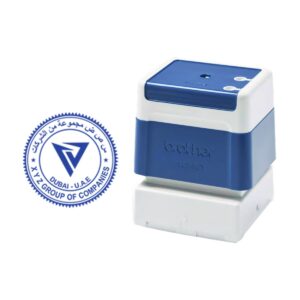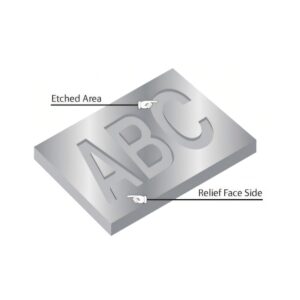The primary function of an embossing seal is to leave a three-dimensional, textured design that can be felt as well as seen. These seals are often used for official, professional, or decorative purposes.
Here’s a detailed breakdown of our embossing seals:
- Die (or Plate): This is the engraved or etched part of the embossing seal that holds the design or logo. It can be custom-made to feature anything from a simple monogram to complex artwork, official logos, or seals.
- Handle: This is the part of the embossing seal that the user holds or operates. When the handle is squeezed, it forces the die against the material, creating a raised impression.
- Material: Embossing seals are commonly used on thick, high-quality paper, such as letterhead, certificates, or invitations. However, they can also be used on leather, plastic, or fabric, depending on the type of embossing tool.
Common use of Embossing Seals
- Official Documents: Embossing seals are frequently used on legal or governmental documents (like certificates, diplomas, and contracts) to indicate authenticity and add a sense of importance.
- Corporate Branding: Companies use embossing seals to print their logos or other identifying marks on business documents, promotional materials, and product packaging.
- Personalized Stationery and Invitations: Individuals may use embossing seals to create custom stationery, wedding invitations, or personalized gifts with a raised, elegant touch.
- Security: The raised design created by an embossing seal is difficult to duplicate, making it a valuable security feature. It can help protect against counterfeiting, especially for important documents or products.
- Creative and Decorative Uses: In arts and crafts, embossing can add texture and dimension to cards, scrapbooks, or artwork. It can be used to create an elegant, tactile quality to the design.








